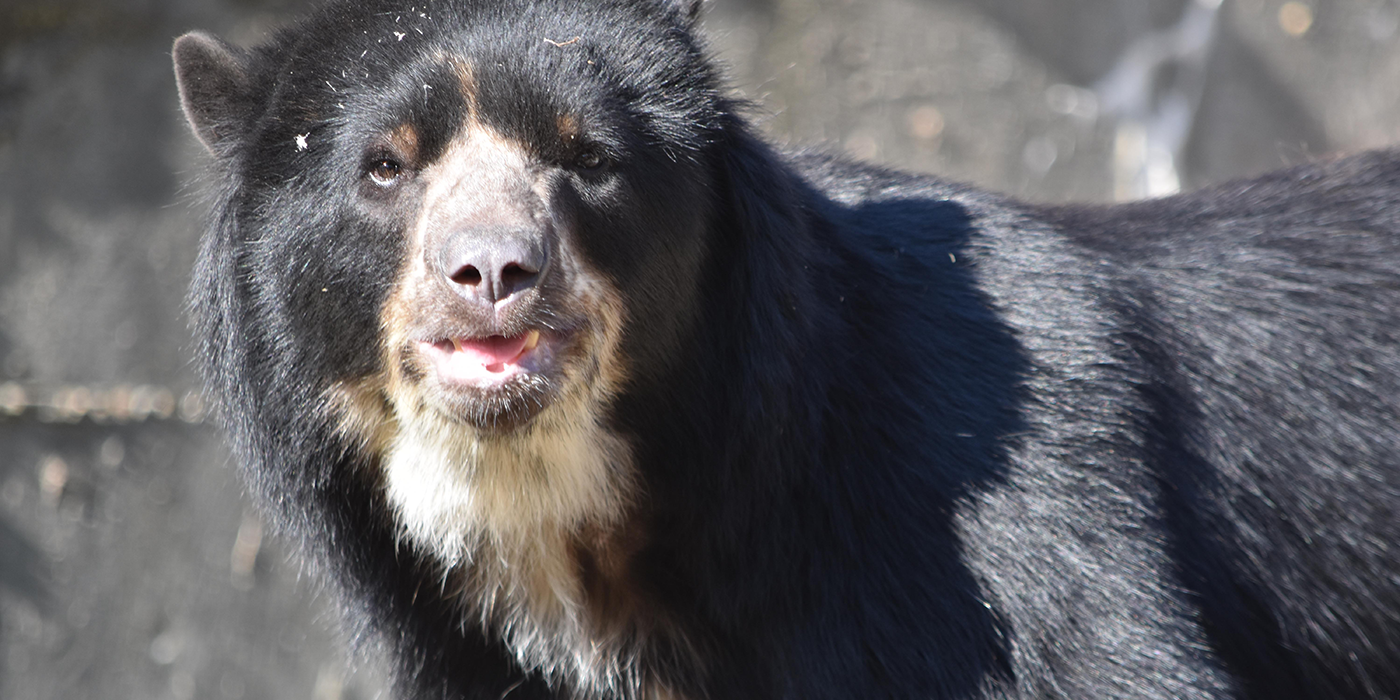No Panda Party Is Complete Without a Cake
In the commissary at the Smithsonian’s National Zoo and Conservation Biology Institute, we don’t just prepare everyday meals for animals around the Zoo. We also make frozen treats — from “bloodsicles” for alligators to castles made of ice for elephants. Making a cake for zoo animals is a little different than baking one at home, because it doesn’t involve baking at all. The cakes we create are made of ice.
Ice cakes are not as sweet as the cakes you’d find in a bakery, and they feature unusual ingredients. Our cakes fall into three major categories: bloodsicles made with beef blood for carnivores (like tigers), fish cakes made of water and fish for seals and sea lions, and veggie cakes made with fruit juice and produce for plant-eaters. These frozen treats provide an enriching activity for animals and can help them cool down in the heat.

This month, we celebrated the 50th anniversary of giant pandas at the Zoo. So, we were busy building three cakes for giant pandas Mei Xiang, Tian Tian and Xiao Qi Ji. Once we get word that we’ll be making a special ice cake, we get to work right away. Every cake we make is unique to the animal or group we’re making it for. First, we consult with animal keepers to find out which ingredients we can use and if there are any favorite foods we should include. We also find out if the cake is for a special event, like a birthday, so we can decorate it for the occasion. Zoo nutritionists review our plans to make sure the ice cake will meet an animal’s nutritional needs. Then, we can start building.
To make a cake for a panda, you must be part chef, part engineer. You must think about how the cake will taste to a panda — and how each piece will fit together without toppling over. Baking a cake at home might take a few hours or even a day. For the pandas' cakes, we needed about four weeks to prepare!
The main ingredients of a panda’s cake are often water, a splash of fruit juice for scent and flavor, food coloring, and fresh produce for decoration. We began by making and freezing each piece for the cakes. Inside one of our deep freezers (which is around -22 degrees Fahrenheit), we filled two large plastic tubs with diluted juice, working at an excruciatingly slow pace. Water freezes from the outside in, and it expands as it freezes. If we filled the containers too quickly, they could crack and spill their icy contents all over the freezer floor. To avoid that dangerous situation, we added just 4 cups of diluted juice at a time and waited about an hour for a complete freeze. After about a week, we were ready to start cutting and drilling.

Using an industrial band saw, we cut the two large frozen pieces in half, creating three cake bases (plus an extra, just in case). Next, we drilled holes into each base to hold stalks of sugar cane. Sugar cane is a favorite snack for giant pandas, and the stalks would help prop up the decorative number 50s that we made to top each cake. Drilling is always the most stressful part of the cake-making process. If we crack the base, it could cost us weeks of work and drastically change the plans for a cake.
Finally, it was time to attach the main pieces. We scratched up all the surfaces of the ice that would make contact. Then, we added water to powdered sweet potato, creating a kind of sticky paste to hold everything together. The sweet potato “glue” starts to freeze the second it touches ice, so we had to be precise as we added each piece. We froze the cakes overnight to make sure everything was nice and stuck together.

Finally, it was time to decorate! We added apples, pears, bananas, sweet potatoes, carrots, sugar cane and bamboo for the pandas. And we used silicon molds to freeze more diluted fruit juice into fun shapes. Then, we had a fun day carving and attaching all the decorations to our heart’s content. The cakes were complete and ready for the big day! Or so we thought ...
We wanted to make sure panda fans near and far could watch Mei Xiang, Tian Tian and Xiao Qi Ji enjoy their treats on the Giant Panda Cam. But we realized the cakes might not be large enough to see on camera. We needed to add a second, larger base to each cake — and it had to happen quickly! This meant more freezing and doing so much faster than we normally would. Luckily, no tubs cracked in the freezer and all three cakes were panda (and camera) ready for their big day!
Related Species:





